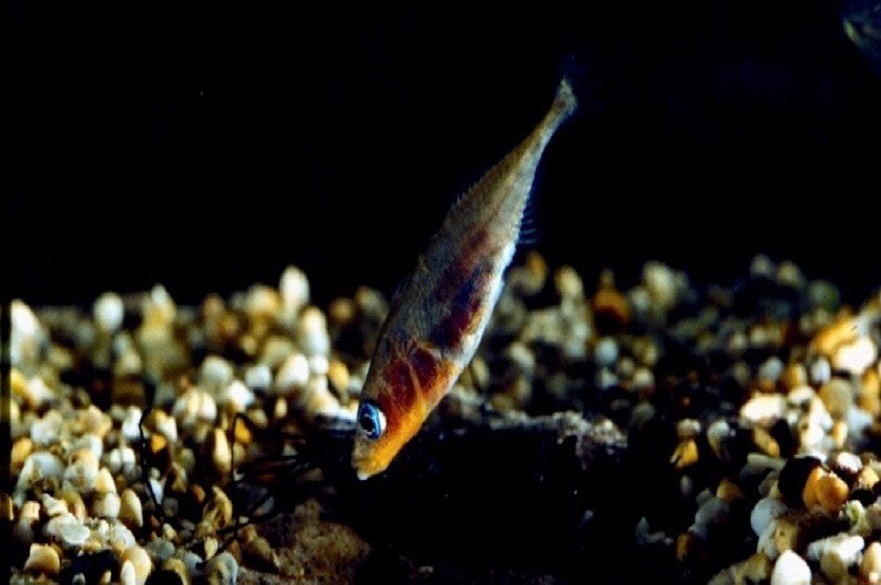Fish adjust parenting style due to environmental changes in the water, study suggests
Falling oxygen levels in the water cause fish to adjust their parenting style, a new study has found – but these behavioural changes may lead to increased mortality among their offspring.
By Dave Rogers | Published on 15 October 2018
Categories: Press office; Research; School of Animal, Rural and Environmental Sciences;

Oxygen levels can drop in ponds, lakes and rivers due to factors such as pollution or as a side effect of climate change.
The newly-published research – led by Nottingham Trent University’s Dr Iain Barber and funded by the Natural Environment Research Council (NERC) – focused on the parental care provided by male three-spined sticklebacks.
Female sticklebacks lay their eggs in nests built by the males, but then play no further part in raising the offspring.
The researchers found that, as oxygen levels dropped, larger males increased the rate at which they used their fins to fan water over the eggs in the nest – which they do to provide a stream of oxygen which is essential for the embryos’ growth and development.
Smaller males did not fan the nest to the same extent, the researchers found, probably because the low-oxygen levels left them with insufficient energy to fan faster.
The eggs being cared for by the larger males subsequently developed more quickly than those of smaller males.
Despite this positive result in terms of development time, however, this appeared to come at a cost.
When the team measured survival rates one week after fertilisation, they found that the egg clutches of larger males experienced higher levels of mortality than those cared for by smaller males.
As water warms up, its potential for carrying oxygen reduces, which can leave fish in trouble. Because oxygen levels can fluctuate naturally, however, many have evolved strategies to cope, often by altering their behaviour as conditions change.
The team of UK and Australian scientists wanted to see what happens when these changes go beyond normal fluctuations, such as during a pollution event or as a side effect of climate change.
The researchers argue that larger males, which are physically fit, increase their fanning rates to compensate for falling oxygen levels. Under natural conditions, these drops in oxygen would be temporary, and increased fanning of the eggs would probably allow males to maintain offspring development rates during short-term oxygen shortages.
However, during prolonged oxygen reductions, this normally-adaptive behavioural response appears to backfire.
“The problem is that as embryos develop, they require more and more oxygen,” said Dr Iain Barber, a behavioural ecologist in Nottingham Trent University’s School of Animal, Rural and Environmental Sciences.
Dr Barber, who began the study while working at the University of Leicester, said: “Embryos experiencing increased fanning from larger males quickly reached a point at which their requirement for oxygen was greater than the ability of the male to supply it.
“Smaller males’ offspring, however, developed more slowly, but paradoxically this may save them because their requirement for oxygen did not increase as quickly. This may give them extra time to survive prolonged periods of low oxygen.”
“The ability to adjust behaviour reactively in this way is seen as an adaptation to variable environments, and it generally benefits their survival. But this year’s long, hot summer has drawn our attention to the problems global environmental change can have on our native wildlife. Such problems can be made worse by input of organic pollutants, which also strip the oxygen from water.”
The team says the results may also have far-reaching implications for the evolution in stickleback populations inhabiting degraded aquatic ecosystems.
Females typically show preferences for larger, more vigorous or fitter males that can engage in prolonged egg fanning bouts. These results suggest that reduced oxygen conditions might reduce the value of making such choices for females, perhaps eroding normal patterns of mate choice and sexual selection, and perhaps making smaller males more attractive as partners.
The research, published in the Journal of Evolutionary Biology, also involved the University of Technology Sydney, the Australian National University and the University of Leicester.
Notes for Editors
Press enquiries please contact Dave Rogers, Public Relations Manager, on telephone +44 (0)115 848 8782, or via email; or Helen Breese, Public Relations Manager, on telephone +44 (0)115 848 8751, or via email.
This study was supported by a UK Natural Environmental Research Council Project Grant (NE/F019440/1) awarded to Iain Barber.
View a video of sticklebacks building a nest and an image is available showing a male (with the orange belly and blue eye) fanning the nest and a female waiting to lay her eggs.
NERC is the driving force of investment in environmental science in the UK. It advances the frontier of environmental science by commissioning new research, infrastructure and training that delivers valuable scientific breakthroughs. It does this because understanding our changing planet is vital for our wellbeing and economic prosperity. More on NERC.
Nottingham Trent University (NTU) was named University of the Year 2017 at the Times Higher Education Awards, and Modern University of the Year in the Times and Sunday Times Good University Guide 2018. These awards recognise NTU for its high levels of student satisfaction, its quality of teaching, its engagement with employers, and its overall student experience.NTU is home to world-class research, and won The Queen’s Anniversary Prize in 2015 – the highest national honour for a UK university. It recognised the University’s pioneering projects to improve weapons and explosives detection in luggage; enable safer production of powdered infant formula; and combat food fraud.